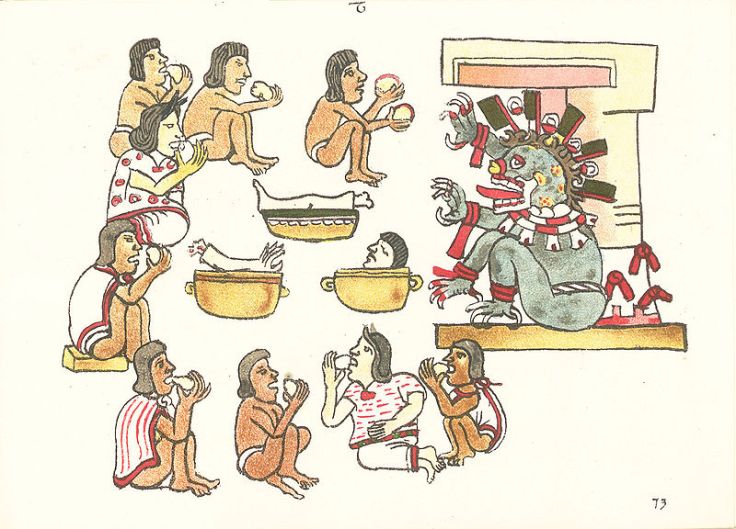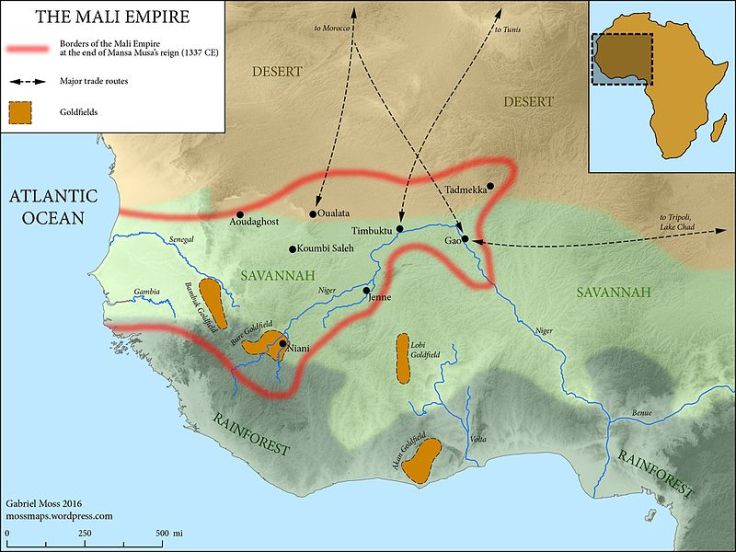During a visit to Nigeria a number of years ago, I asked the taxi driver who took me around, to drive me to the historic town of Arochukwu in the south east. During the Trans-Atlantic Slave Trade, this town was the main hub for the network of Igbo merchants that transported slaves to Europeans on the coast.
“Tufiaaaaaa!” the cabbie shouted, shuddering and snapping his fingers. “Tufia” is an onomatopoeic Igbo word for spitting forcefully, an expression of absolute rejection and disgust. “Arochukwu?” he continued, his voice still rising. “Mba! Till today, ha ka ne li anu mmadu!” Translation: No way! Till today, they still eat human flesh!
He begged me not to go because he was sure I would disappear—into a soup pot—while I tried very hard to convince him there was no danger in going there. I offered him extra money for what I believed would be an educational visit for us. In the end, he would not budge, despite my argument that the people of Arochukwu today are nearly all Christians who would find the thought of eating human flesh just as abhorrent as he did.


I eventually found another cab driver (a relative) willing to take me there, and of course, in the long hours we spent there, we were never in any danger of being eaten. The first cab driver’s reaction to visiting a place where he believed cannibals still exist is typical of the revulsion and horror humans of today generally feel toward the idea of eating human flesh, and being eaten themselves.
Such is the universal dread of cannibalism that some think it never existed, and is a racist myth invented by devious colonialist Europeans. Others want to believe that cannibalism is something “those people, not us” do: a female friend from Tanzania once told me that cannibalism is a practice found only among white people, and gave Jeffrey Dahmer as a supporting example.
An American professor of anthropology, William Arens, has actually written a book denying its existence as a cultural practice anywhere in the world (The Man Eating Myth—Anthropology and anthropophagy.) But Arens is dead wrong; cannibalism as a cultural practice did exist. I know because my people were once cannibals—their cannibalism is part of the oral traditions I heard as a child: my mother, a staunch Catholic, used to scrunch her face in disgust when her uncles told her that her grandfather ate human flesh as part of the rituals for his investiture as an ozo titled man .
Despite our refusal to believe, cannibalism used to be quite widespread. “Cannibalism was at one time practically universal,” wrote Pulitzer Prize winning historian Will Durant in Our Oriental Heritage, Vol 1 of his Story of Civilization series. “It has been found in nearly all primitive tribes, and among such later peoples as the Irish, the Iberians, the Picts, and eleventh century Danes.”
The great Finnish sociologist Edward Westermarck, in his massive work on the origin and development of moral ideas, listed regions of the world where cannibalism was “particularly prevalent”—South Sea Islands, Australia, Central Africa, and South and Central America. He also noted that it has been found among North American Indians, some tribes of the Malay Archipelago, and a few people of Asia. “And it is proved to have occurred in many parts of Europe,” he wrote. This last view is supported by St Jerome (AD 347-420) who reported seeing cannibal practices among a tribe of ancient Britons known as the Attacoti who inhabited what is today Scotland.
Spanish conquistador Cortez found “industrial scale” cannibalism in Mexico when he arrived there in the 16th century, says Nathan Constantine in A History of Cannibalism: from ancient sources to survival stories and modern psychopaths. The Bafum-Bansaw of Southern Nigeria cooked their victims alive from the inside out by forcing boiling palm oil into their anal orifices and stomachs, apparently to make their flesh more succulent, reports the same author.

So where did this appalling behavior come from? There is some evidence in the form of fossilized human bones with teeth marks that our proto-human ancestors practiced cannibalism . Our closest genetic cousins among the primates, the chimpanzees, have been observed to be occasional cannibals, killing and eating enemies, or infant chimps. Both past practice and our current revulsion at the idea could be part of our contradictory human nature, cannibalism being a part of us that modern culture has succeeded in scrubbing out.
There were different forms of it among humans—there was culinary or gustatory cannibalism where people ate human flesh simply because they liked it or even preferred it to other forms of meat. A Maori cannibal who was brought to London in 1818 scandalized English people at dinner parties by declaring that he was tired of beef, and missed the taste of human flesh. There is ritual cannibalism where human flesh is eaten as part of some religious purpose, transference cannibalism where warriors and shamans eat powerful people to gain their powers, and medical cannibalism where people eat a part of the human body as cure (this was a part of European medicine up until the 17th century), to name just a few.
I should point out that cannibalism was not found everywhere in Africa, nor was it even widespread throughout pre-slavery and precolonial Africa. For one thing, it was not practiced in the Islamic states of the Sahel region, though the situation may have been somewhat complex, with cannibal communities existing near or beside states that did not practice it. For example, the Moroccan traveler Ibn Battuta visited the court of the Mansa (emperor) Suleiman of the Islamic West African Empire of Mali in the mid-1300s, and reported that the Mansa gave some “unbeliever” visitors a “hospitality gift” of a slave girl whom they butchered and ate. So while the Mansa and his subjects were not cannibals, he seemed quite willing to respect and enable the horrible customs of his foreign guests.

Much cannibalism was found dispersed in the African forest belt, though even that is a gross generalization. Some practiced it, and some did not. It was possible to live in one village where it was practiced while the next village ten miles over did not. But the fact that some people way over yonder practiced it created a fear well out of proportion to its actual existence.
So why are we talking about this shocking embarrassment known as cannibalism? Because if we are looking for some of the inhibitors to development and economic advancement, the fear of being eaten by marauding neighbors is a very big one, as is the fear of being captured for food or ritual while you are in the process of making a trading trip. If the neighboring village ate human flesh, that neighborhood was well worth avoiding lest they turn you into dinner. While the reaction of my cab driver may seem silly today, it was a very real concern in tribal days, especially given that there is some evidence that, back then, the Arochukwu people did consume human flesh that had been sacrificed to their god.
For economies to develop, for labor to be able to freely move to where there is a need for it, for investment to go freely to where there are opportunities, and for people to spend money in different locations to stimulate the economy, there cannot be communities people are afraid to visit or travel through because they might come to a grisly end. Even today, people avoid areas where harm can come to their persons, and such areas are consequently poor and underdeveloped. Violence tends to hinder development, and frightening things like cannibalism hindered free movement of people, ideas, and money, even where that peculiar horror only existed in people’s minds.
Select sources and books you might want to read.
A History of Cannibalism: From ancient cultures to survival stories and modern psychopaths, Nathan Constantine.
Cannibalism: The last taboo, Brian Marinner
Ibn Battuta in Black Africa, translated by Said Hamdun and Noel King.
The Origin and Development of Moral Ideas, Vol 2, Edward Westermarck, see chapter on cannibalism.
Laugh out loud funny. Very informative.
LikeLike
I am finding this all very interesting since my knowledge of world history is miniml.
LikeLike
You, Mr. Chigbo, are a very convincing writer and researcher and a scallywag.
LikeLike
Mr, Carter, I don’t know about the first two, but I AM a scallywag.
LikeLike
Interesting food for thought (pun joyfully intended). A very convincing argument to help explain Africa’s underdevelopment
LikeLike
Thanks Freedom50.
LikeLike
Thought provoking but could have loved to see more depth on the fact that cannibalism continues to be a subculture that exists in modern society. Perhaps there are a plethora of examples of such in modern society. The practice considered abohorent and condemned by modern law but continues to be practiced for various reasons traceable to the same highlighted in some of the examples from the era of precivilization.
LikeLike
Thanks Seloweizer. I wish I had more time and space to expand on what is a clearly complex subject. My primary aim though was to draw attention to overlooked factors that existed in traditional societies that may have contributed to economic and social backwardness.
LikeLike
Cannibalism and the Common Law. A.W. Brian Simpson. University of Chicago Press. 1984
This is another source worth looking into.
Have forwarded this piece to my son at college…should be a great addition to the yeye engineering classes.
LikeLiked by 1 person
I’ll check it out.
LikeLike
Igbos never practice that. Igbos Religion was close to Judaism! Where Cannibalism exist is in Yoruba ethnic Group till this days. Google Soka forest or Ibadan ritual camp. There’re Videos also on Youtube
LikeLike